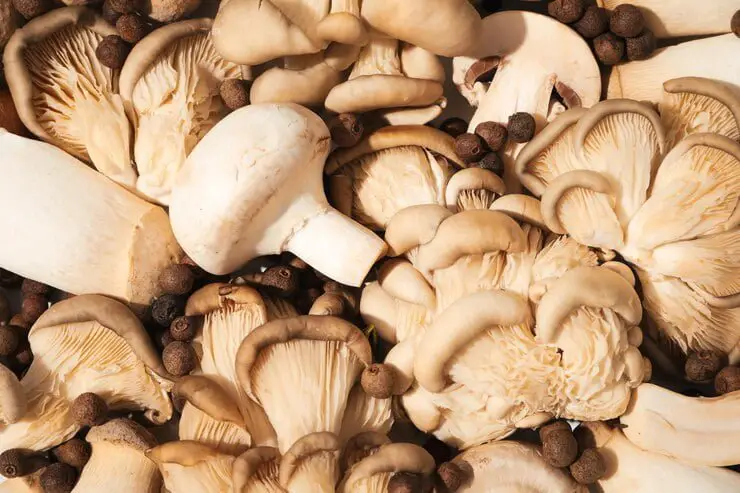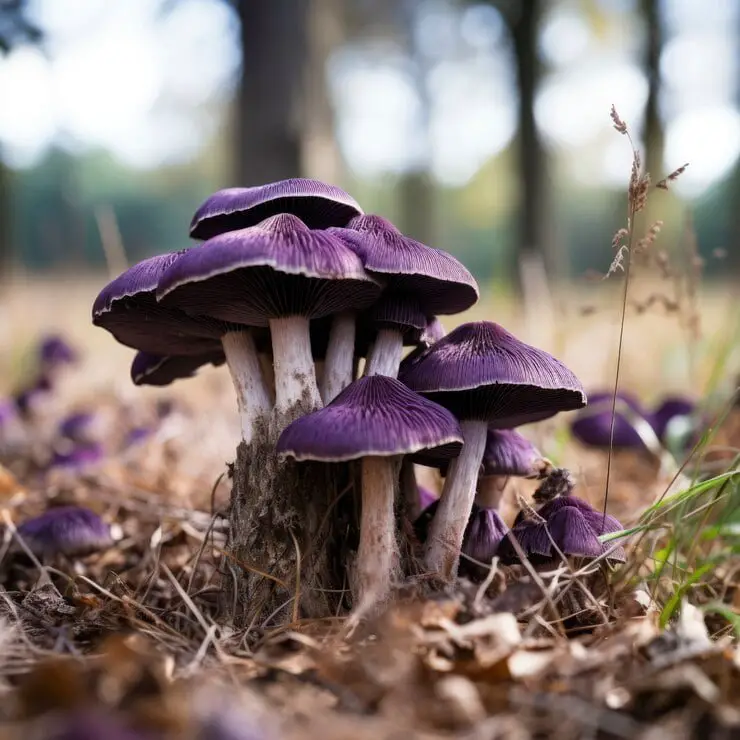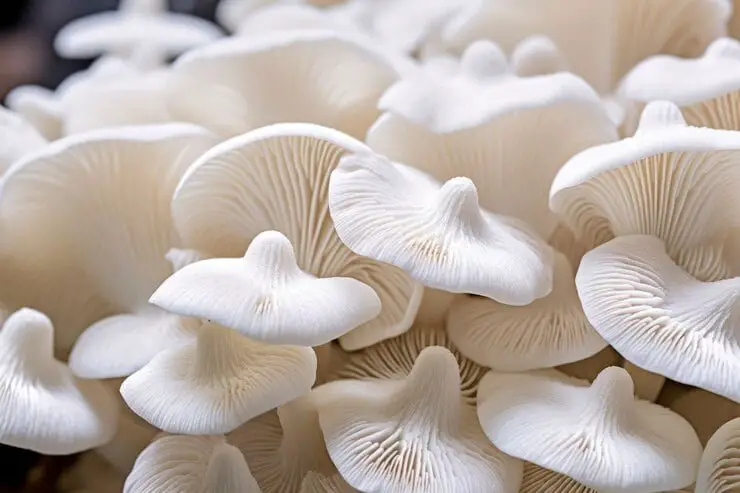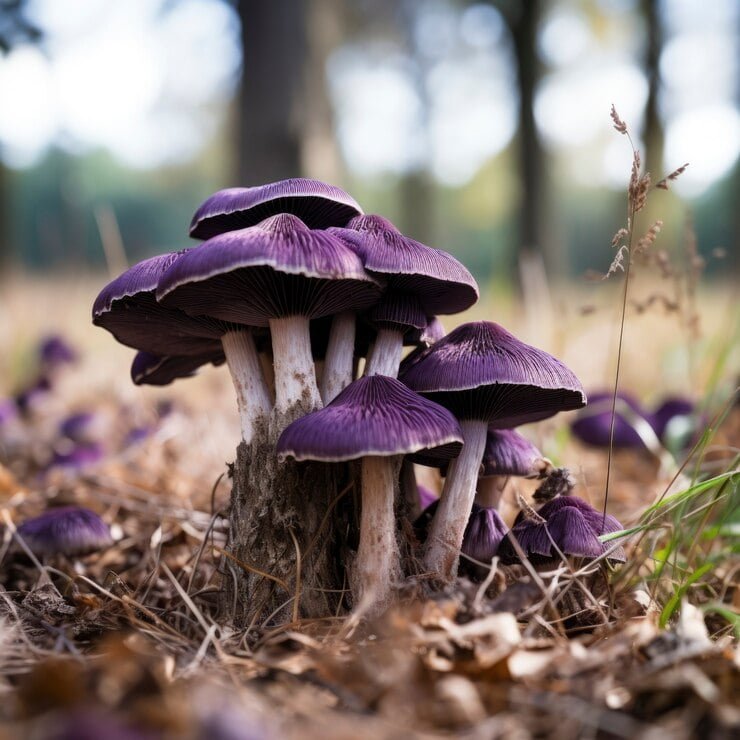Table of Contents
Introduction to Shrooms: An Insight into Psychedelic Mushrooms
Psychedelic mushrooms, commonly known as shrooms, have captivated human curiosity and spiritual exploration for centuries. These fascinating fungi contain psychoactive compounds that alter perception, mood, and cognitive processes. While they have deep historical roots in various cultures and rituals, shrooms have gained significant attention in modern times for their potential therapeutic benefits and their role in recreational use.

What Are Shrooms?
Shrooms are a type of mushroom that contains psychoactive substances, primarily psilocybin and psilocin. These compounds are responsible for the mushrooms’ hallucinogenic effects, which can include changes in sensory perception, mood, and thought processes. The most commonly known species of psychedelic mushrooms include:

- Psilocybe cubensis: Often referred to as “golden teachers,” these mushrooms are among the most widely used due to their moderate potency and relatively easy cultivation.
- Psilocybe semilanceata: Known as “liberty caps,” these mushrooms are recognized for their potent effects and are found in grassy meadows and pastures.
- Psilocybe cyanescens: Sometimes called “wavy caps,” these mushrooms are renowned for their intense psychoactive effects and are typically found in wood chips or mulch.
Historical and Cultural Significance
Throughout history, shrooms have been used in various cultural and spiritual practices. Indigenous peoples in the Americas have utilized psychedelic mushrooms in religious ceremonies to achieve altered states of consciousness, gain spiritual insights, and connect with the divine. These traditions are rich with ceremonial use, where the mushrooms are consumed as part of sacred rituals aimed at healing, divination, and communal bonding.
In the mid-20th century, the rediscovery of shrooms in the Western world led to a surge of interest in their potential therapeutic uses. Researchers like Dr. Albert Hofmann, who first synthesized psilocybin in the 1950s, sparked a new era of exploration into the psychedelic properties of these mushrooms. Since then, shrooms have been the subject of various scientific studies investigating their effects on mental health, consciousness, and perception.
Modern Use and Legal Status
Today, shrooms are often discussed in the context of both recreational use and potential therapeutic applications. The resurgence of interest in psychedelics has led to renewed research into their benefits, including their potential to treat depression, anxiety, and PTSD. Clinical trials and studies are exploring how psilocybin-assisted therapy can provide relief for individuals struggling with mental health issues.
However, the legal status of shrooms varies significantly around the world. In many countries, psilocybin mushrooms are classified as controlled substances, making their possession, use, or distribution illegal. Despite this, there has been a growing movement advocating for the decriminalization and medical use of psychedelics. In some regions, such as certain U.S. states and countries like Canada and the Netherlands, there are legal pathways for their use in research and therapeutic settings.
Why Understanding Shrooms is Important
Understanding shrooms and their effects is crucial for both users and researchers. Knowledge of their psychoactive properties, potential benefits, and risks can help individuals make informed decisions about their use. For researchers and healthcare professionals, continued study of psychedelics can unlock new treatment options and deepen our understanding of consciousness and mental health.
In Summary, shrooms are more than just a topic of curiosity; they represent a complex interplay of history, culture, science, and personal experience. Whether viewed through the lens of ancient rituals or modern science, psychedelic mushrooms continue to intrigue and challenge our perceptions of reality and consciousness.
When Do Shrooms Start to Kick In? Timing and Factors
The onset of effects after consuming shrooms, or psychedelic mushrooms, depends on several factors, including dosage, method of consumption, and individual biology. On average, most users begin to feel the effects within 20 to 40 minutes, but this can vary widely. Here’s a breakdown of how quickly shrooms may start to kick in and what affects the timing.
Average Onset Time
- 20 to 40 Minutes: The majority of users report feeling the initial effects of shrooms within this window after ingestion.
- 60 to 90 Minutes: For others, it may take longer, with some not feeling the full effects for up to 90 minutes after consumption.
Factors That Influence When Shrooms Kick In
1. Method of Consumption
- Eating Whole Mushrooms: The most common way to consume shrooms is to eat them raw or dried. In this case, the digestive system needs time to break down the mushrooms and absorb the psilocybin, which is then converted to psilocin (the active compound). This process typically takes about 30 to 60 minutes.
- Tea or Liquid Form: Consuming shrooms as tea or in a liquid form tends to speed up the absorption process because the psilocybin is already partially broken down in the liquid. Users report feeling effects within 15 to 30 minutes when shrooms are prepared this way.
- Lemon Tek: Some users prepare shrooms by soaking them in lemon juice (Lemon Tek) to help convert psilocybin to psilocin faster. This method may reduce the onset time to as little as 10 to 20 minutes.
2. Dosage
- Higher doses generally lead to faster onset times, as more psilocybin enters the bloodstream quickly. However, large doses can also increase the intensity and duration of the effects, which may result in a more intense and prolonged experience.
3. Empty vs. Full Stomach
- Empty Stomach: If shrooms are taken on an empty stomach, they are absorbed more quickly, often leading to a faster onset, sometimes as quickly as 15 minutes.
- Full Stomach: If you’ve eaten a large meal beforehand, it may take longer for the psilocybin to be absorbed, delaying the onset to around 60 to 90 minutes.
4. Body Weight and Metabolism
- Individuals with faster metabolisms or lower body weight may feel the effects sooner, while those with slower metabolisms or higher body weight may experience a delayed onset.
5. Strain and Potency
- Different strains of mushrooms have varying levels of psilocybin, meaning stronger strains can lead to faster onset times. Some potent varieties may kick in sooner than milder ones.
6. Personal Tolerance
- People who have consumed shrooms or other psychedelics recently may experience delayed or muted effects due to tolerance. Tolerance can build quickly, often requiring several days to return to baseline sensitivity.
Initial Effects: What to Expect
When shrooms start to kick in, users typically experience the following early effects:
- Physical Sensations: A slight body buzz, tingling, or lightness, sometimes described as euphoria or warmth.
- Mental and Emotional Shifts: A sense of enhanced mood, altered perception of time, and increased sensory sensitivity. Colors may appear more vivid, and sounds more intense.
- Visual Changes: Subtle visual distortions such as trailing lights, enhanced colors, or shifting patterns may begin to emerge.
On average, shrooms start to kick in within 20 to 40 minutes, but several factors—such as method of consumption, dosage, and individual biology—can influence this timing. Understanding these factors can help you gauge when to expect the effects and ensure a smoother, more controlled experience.
Are Shrooms Addictive? Understanding the Risks
Psychedelic mushrooms, commonly known as shrooms, have garnered significant interest for their mind-altering effects and potential therapeutic benefits. As with any psychoactive substance, understanding their addictive potential is crucial for those considering their use. Here, we delve into whether shrooms are addictive and explore the factors that contribute to their risk profile.

Psychedelic Properties and Addiction Potential
Psychedelic mushrooms contain two primary psychoactive compounds: psilocybin and psilocin. These compounds interact with serotonin receptors in the brain, leading to altered perceptions, mood changes, and cognitive shifts. Unlike substances that lead to physical dependence, such as opioids or alcohol, shrooms primarily influence psychological states rather than creating a physical craving for the substance.
Addiction and Dependence
1. Physical Dependence:
- Lack of Physical Craving: Research suggests that psychedelic mushrooms do not cause physical dependence. Users do not experience withdrawal symptoms or physical cravings similar to those associated with addictive substances like nicotine or heroin.
- Short-Term Effects:The effects of shrooms are typically short-lived, lasting from a few hours to a day, depending on the dosage and individual factors. This transient nature reduces the likelihood of developing a physical dependency.
2. Psychological Dependence:
- Potential for Psychological Craving: While shrooms do not cause physical dependence, there is potential for psychological dependence. Some users may develop a strong desire to repeat the experience due to its profound or enjoyable effects. This is more about seeking the psychological and emotional impact rather than a chemical craving.
- Frequency of Use: Regular or frequent use of shrooms can lead to psychological dependence, particularly if an individual starts using them as a coping mechanism or as a means to escape from reality. However, the nature of psychedelic experiences often leads to a diminished desire to use them frequently.
Factors Influencing Risk of Dependence
1. Usage Patterns:
- Frequency of Use: The risk of developing a psychological dependence on shrooms increases with more frequent use. Since the effects can be intense and transformative, users might be tempted to use them regularly. However, many people who use shrooms do so infrequently due to the profound nature of the experience.
- Dosage and Setting: Higher doses and intense experiences can lead to a stronger psychological impact, which might influence the desire to repeat the experience. Using shrooms in a safe and controlled environment, with proper guidance, can help mitigate this risk.
2. Personal Factors:
- Mental Health: Individuals with underlying mental health conditions may be at a higher risk of developing psychological dependence on shrooms. For some, the altered states of consciousness can provide temporary relief from mental health issues, leading to increased usage.
- Expectations and Intentions: Users who approach shrooms with a specific intent or expectation of solving personal problems might be more likely to develop a psychological attachment to the substance.
Research and Findings
Scientific research into the addictive potential of shrooms is limited compared to other substances. However, existing studies suggest that psychedelics, including psilocybin, have a lower risk of addiction compared to substances like alcohol, tobacco, or opioids. Studies on the use of psychedelics for therapeutic purposes have shown that they can provide lasting benefits without leading to addiction.
For example, research on psilocybin therapy has demonstrated that patients can experience significant improvements in mood and mental health conditions with just a few sessions, without developing dependence on the substance.
Mitigating the Risk of Dependence
To minimize the risk of psychological dependence, consider the following guidelines:
- Use Responsibly:Limit the frequency of use and avoid using shrooms as a means to escape from reality or manage stress.
- Understand the Effects: Educate yourself about the effects and potential risks associated with shrooms to make informed decisions.
- Seek Professional Guidance:If you have concerns about your use of shrooms or are experiencing psychological distress, consult a healthcare professional for guidance and support.
In summary, psychedelic mushrooms are not considered physically addictive, and the risk of developing a physical dependency is minimal. However, there is potential for psychological dependence, particularly with frequent use or underlying mental health issues. By understanding the nature of shrooms and using them responsibly, individuals can enjoy their benefits while minimizing the risks associated with their use.
Can Taking Too Many Shrooms Be Dangerous?
Yes, taking too many psychedelic mushrooms, commonly known as shrooms, can potentially be dangerous. While they are generally not considered physically addictive or toxic, consuming large amounts can lead to intense psychological effects, serious mental distress, and risky behavior. Below is a breakdown of the potential dangers associated with taking an excessive dose of shrooms.
Psychedelic Overload: Intense and Overwhelming Experience
When someone takes a large dose of shrooms, they may experience an overwhelming “psychedelic overload.” This can involve extremely heightened sensory perception, intense hallucinations, and profound alterations in thoughts and emotions. In some cases, this overwhelming experience can trigger:
- Severe Anxiety: A high dose may cause extreme anxiety, fear, or paranoia, often referred to as a “bad trip.” This psychological distress can be frightening and may persist for hours.
- Panic Attacks: Some individuals may experience panic attacks during the trip, leading to rapid heartbeat, sweating, and difficulty breathing.
- Confusion and Disorientation: A person might lose touch with reality, become confused, or experience disorientation, making it difficult to perform basic tasks or maintain awareness of their surroundings.
Risk of Psychosis and Mental Health Effects
For individuals predisposed to mental health disorders, taking an excessive amount of shrooms can exacerbate or trigger conditions like:
- Psychosis: Large doses of psilocybin can cause temporary psychotic episodes, particularly in individuals with a history of mental illness or those at risk for schizophrenia.
- Paranoia and Delusions: In rare cases, users may develop paranoid thoughts, delusions, or feel disconnected from reality for an extended period.
- Flashbacks: Some people may experience “flashbacks” or hallucinogen persisting perception disorder (HPPD), where they continue to experience visual distortions or hallucinations long after the effects of the shrooms have worn off.
Physical Risks
Although shrooms are not physically toxic, large doses can indirectly cause harm due to the altered mental state they induce. Potential physical risks include:
- Accidental Injury:Under the influence of a high dose of shrooms, a person may misjudge their surroundings or engage in risky behavior, increasing the likelihood of accidents, falls, or injuries.
- Dehydration: Some individuals may experience excessive sweating or hyperthermia, especially if they are unaware of their physical state during the trip.
- Nausea and Vomiting: High doses can lead to intense nausea and vomiting, which can cause dehydration and discomfort.
Potential for Long-Term Psychological Effects
While many people recover from a bad trip without lasting issues, there are instances where long-term psychological effects can arise. These might include:
- Post-Traumatic Stress: An extremely negative or traumatic trip can leave lasting emotional scars, making it difficult for the person to feel safe or at ease afterward.
- Depersonalization and Derealization: Some users may experience ongoing feelings of detachment from reality or from their own identity, which can be disorienting and emotionally distressing.
How to Reduce the Risk of Harm
If you’re considering using shrooms, it’s important to take precautions to reduce the risk of adverse effects:
- Start with a Low Dose: Beginners should always start with a small dose to understand how their body and mind react to the substance.
- Set and Setting: Ensure you’re in a safe, comfortable environment with trusted people around. A positive mindset and a controlled setting can help prevent bad trips.
- Know Your Mental Health: If you have a history of mental health issues or are predisposed to conditions like psychosis, it’s best to avoid psychedelic substances, as they can trigger or worsen these issues.
- Have a Trip Sitter: A sober, responsible person should be present to watch over you and ensure your safety during the experience.
- Avoid Combining with Other Substances:Mixing shrooms with alcohol, cannabis, or other drugs can intensify their effects and increase the risk of negative reactions.
While shrooms have a reputation for being relatively safe in low doses, taking too many can be dangerous. Large doses can result in overwhelming psychological effects, potential mental health risks, and physical harm due to impaired judgment. Responsible use, understanding one’s limits, and being aware of the potential risks are key to minimizing the dangers associated with consuming psychedelic mushrooms.
FAQ: When Do Shrooms Start to Kick In?
1. How long does it take for shrooms to start working?
- On average, shrooms start to kick in within 20 to 40 minutes after ingestion, but it can take up to 60 to 90 minutes depending on various factors like dosage, method of consumption, and metabolism.
2. Do shrooms kick in faster on an empty stomach?
- Yes, taking shrooms on an empty stomach can speed up the onset time. Users may start feeling effects as quickly as 15 to 30 minutes when taken without food.
3. What is the fastest way for shrooms to kick in?
- Preparing shrooms as tea or using the Lemon Tek method (soaking in lemon juice) tends to produce the fastest onset, sometimes as quickly as 10 to 20 minutes.
4. Does dosage affect how fast shrooms kick in?
- Yes, higher doses generally lead to faster onset times as more psilocybin enters the bloodstream quickly. However, larger doses can also lead to more intense effects.
5. Can taking shrooms with food delay the effects?
- Yes, if you’ve eaten a large meal before consuming shrooms, it may take longer for the effects to start, often delaying onset to around 60 to 90 minutes.
6. Do different strains of mushrooms affect onset time?
- Yes, different strains of mushrooms have varying psilocybin levels. Stronger strains may lead to quicker onset, while milder strains might take longer to kick in.
7. How long do shroom trips last after they kick in?
- Once shrooms kick in, the effects generally last 4 to 6 hours, though the overall experience can vary based on dosage and individual tolerance.
8. How does body weight and metabolism affect onset time?
- Individuals with faster metabolisms or lower body weight may feel the effects sooner, while those with slower metabolisms or higher body weight may experience a delayed onset.
9. Can building tolerance to shrooms affect how fast they kick in?
- Yes, if you’ve recently taken shrooms or other psychedelics, your tolerance may be higher, which can delay or mute the onset of effects.
10. Are there any signs to know when shrooms are starting to kick in?
- Initial signs include physical sensations like warmth or tingling, changes in mood, heightened sensory perception, and subtle visual distortions such as brighter colors or shifting patterns.
Conclusion: Understanding the Onset and Effects of Shrooms
Shrooms, or psychedelic mushrooms, offer a unique experience shaped by various factors such as dosage, method of consumption, individual metabolism, and tolerance. Typically, users can expect shrooms to kick in within 20 to 40 minutes, but this can extend up to 60 to 90 minutes depending on personal conditions like an empty or full stomach, body weight, and even the strain of mushrooms used.
For those seeking a faster onset, methods like consuming shrooms as tea or using the Lemon Tek technique can speed up the process, sometimes allowing effects to begin in as little as 10 to 20 minutes. Once the effects start, users experience a range of sensations, from physical warmth and tingling to visual distortions and heightened emotional sensitivity.
However, it’s important to approach shrooms with caution, particularly in terms of dosage. Larger doses may lead to faster onset but also more intense and prolonged effects. Over consumption can lead to disorienting or overwhelming trips, with long-lasting psychological impacts. While shrooms are not physically addictive, frequent use can build tolerance, requiring higher doses for the same effects, which increases the risk of adverse experiences.
Shrooms offer a powerful journey into altered consciousness, but the timing and intensity of the trip are influenced by many factors. Understanding these variables can help users have a more controlled and safe experience. Always consume responsibly, be mindful of your surroundings, and ensure you’re in a safe and supportive environment. Read more


Thank you for your sharing. I am worried that I lack creative ideas. It is your article that makes me full of hope. Thank you. But, I have a question, can you help me?
Your article helped me a lot, is there any more related content? Thanks!